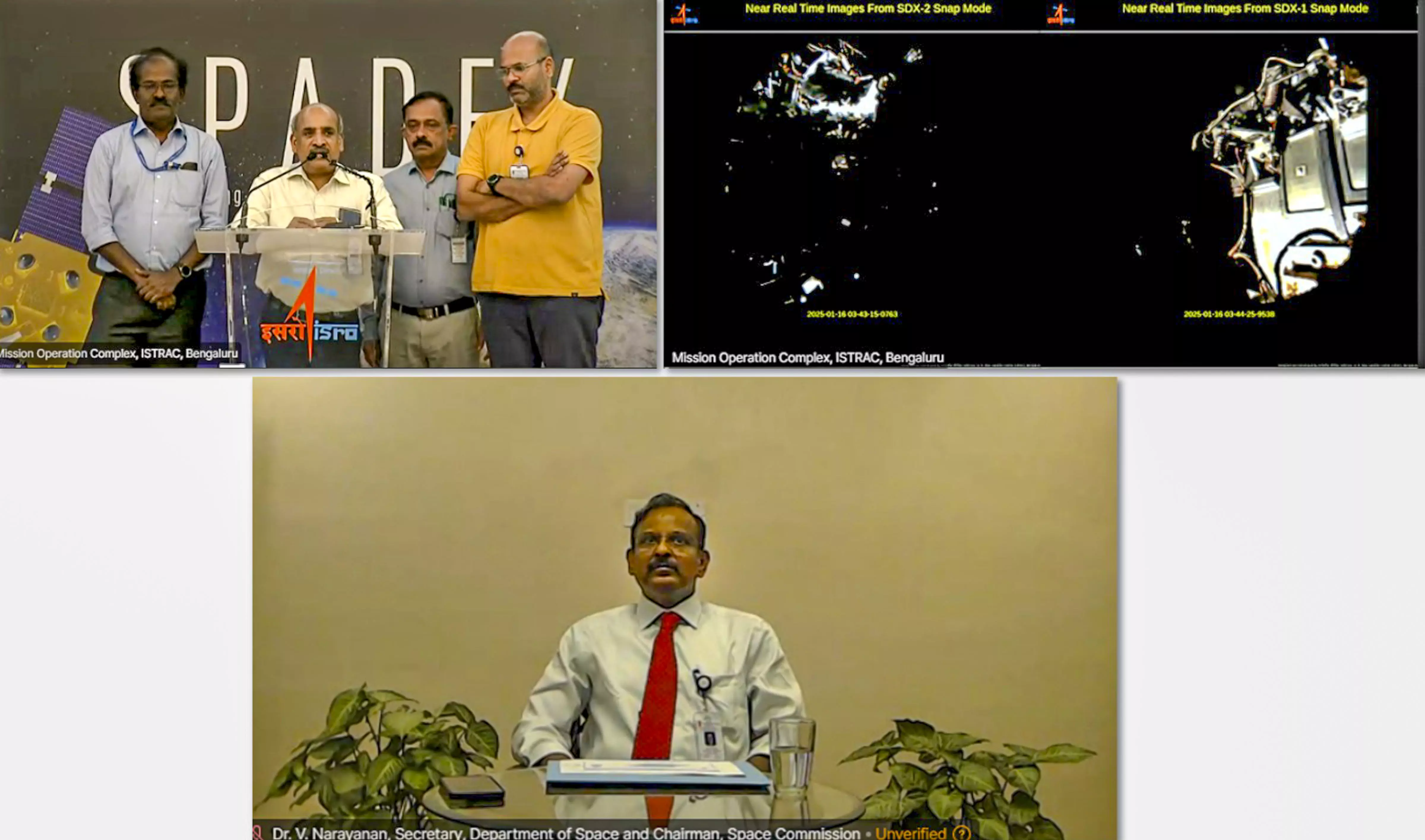AA Edit | For Isro, sky is not the limit

Isro has described the SpaDeX project in which the docking of two satellites was performed as a cost-effective demonstrator to showcase in-space docking using small spacecraft. For the country, it is a giant leap towards developing autonomous docking that is crucial to fulfil its mounting ambitions in space.
The success of the experiment holds the key to exploration future goals that includes manned flights to space as well as building space stations. The technology pioneers in space station building — the US and Russia — are said to be going off space stations as they may have raised their ambition to building habitable ports on the Earth’s moon and beyond.
For India, this incremental step to wider space exploration means a lot as it adds to Isro’s capabilities in handling complex space projects like manned flights from which astronauts can smoothly transfer between vehicles safely in space, stay in space stations or, in the future, even colonise the moon, an ambition that many dreamers about space imagine would serve the goal of preserving the human race.
The two satellites that were launched in December 2024 and docked now in a third attempt were made by private entities, which means that the Indian space programme is being further fuelled by private enterprise, and all in a cost-effective manner that is a wonder to such heavily funded organisations like Nasa. The reforms in the space sector allowing private participation are beginning to pay off too.
When two satellites connect precisely to form a larger system, it lends itself readily to more complex operations in space allowing multiple components to function together. Isro cannot do everything on its own, however capable the organisation has been as India’s pride in the conquest of space.
As Isro’s new chairman pointed out, the technological achievement simply adds to the confidence with which the space player is looking forward to bigger missions after having launched Aryabhatta, India’s first satellite 50 years ago. There are lunar lander and sample retriever missions planned, so too a Venus orbiter, India’s own space station and a Mars lander. All this after Gaganyaan, the first manned mission scheduled for this year, takes off.
Contrary to the popular saying, the sky’s not even the limit for space exploration and it has always been a source of immense pride that India is among the four most advanced space-exploring nations with multiple capabilities.
